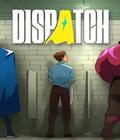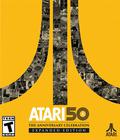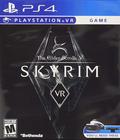Buy The Elder Scrolls V: Skyrim
The Elder Scrolls V: Skyrim has seen quite a few releases during the six years since its original release, most recently on the Nintendo Switch and PSVR. While it's easy to dismiss those releases as a quick cash grab, there may more to it, especially when talking about PlayStation VR.
Skyrim is a prominent name in the industry, but that doesn't necessarily mean that the experience is just as great over six years later. It's still a good RPG experience that has already been played by a lot of people, and it certainly hasn't aged well or lost many of its signature glitches over time. Aside from that, it is still one of the first fully fledged virtual reality experiences making the jump to VR on a console, and it even did so as a timed exclusive when it launched last year. The question is whether the added dimension and perception of VR manage to craft an immersive and fun experience. It's not easy to layer a "flat video game" into VR, but Skyrim VR does a lot of things right, while also coming up short in some areas. Since its debut on the PS4 last year, Skyrim VR has received at least one major update, which we will consider in this review. This review covers Skyrim VR as of update 1.4x.
When the concept was still a mere dream, the biggest draw of VR was experiencing other worlds as if they were your own by strapping some glasses to your forehead and diving headfirst into an alternate reality. For many people, Skyrim may be that alternate fantasy universe. No matter how fond you are of The Elder Scrolls and this entry in particular, it certainly has one of the deepest lore and world-building elements in a Western RPG. Thankfully, the complete Skyrim experience has made the jump to VR. There is no cut content or shortcuts; this is the full game tailored to both new input methods and your own motion sickness.
Therefore, the game follows the same route as the other versions. We arrive as a nameless creature of unknown origin at a fort with some rebels, ready to have our precious heads removed for being mistaken as a rebel. Before we can kiss our life goodbye, we can create the protagonist to our own liking, and afterward, we use the diversion of a subsequent dragon attack to flee. From that moment, we are free to do whatever we'd like in the open world of Skyrim. We can follow the main quest line as a Dragonborn, the only hope to stop the resurfacing Dragons and save the world. We can ignore that and join the rebellion, join the mage university, or go the vampire route due to all the expansions that are included in Skyrim VR.
That also means you'll feel right at home here if you've played any of the prior versions. It's still the same game full of distractions around every corner, dragons, dungeons, favors, killing, loot, leveling up, stealing, or whatever else you'd like to do. At the same time, you'll also run into the very same bugs that you have always encountered, from giants instantly punching you into the stratosphere to dragons forgetting how to dragon and awkwardly vanishing into the sky without any animations. It still looks the exact same — minus the concessions that had to be made to run on PSVR, but more on that later — and if we didn't have the ability to freely move our heads and arms in a 3D space, this version would be as good or bad as the lot that came before.
If you haven't played Skyrim before, it's a deep RPG experience that doesn't restrict you in any way. You have access to many different skill trees into which you can invest skill points when leveling up, and you improve stats based on what you do in the world. If you pick a lot of locks, your lockpicking game improves. If you like to set things on fire, your destructions ability increases, and so does every other thing you do. There is plenty of story content, and much of it is found off the beaten path. The most interesting ability you have as a so-called Dragonborn is the ability to absorb the soul of killed dragons, granting you insight into their knowledge and learning powerful spells in the dragon language.
Skyrim has a grand sense of scale in both environments and enemies that are more pronounced when it feels like you're standing right in the middle of it. It also has a million books to read about its world, and many NPCs will tell you bits and pieces, forming the lore of The Elder Scrolls that you can dive into or ignore.
One of the strengths of Skyrim is that it's a deep and free experience that doesn't tie you down but lets you explore anything and to your heart's content. More importantly, it's an experience that is without match on PlayStation VR at the moment in terms of depth, open-world gameplay and content. It stands or falls based on how well it works with the headset in front of your eyes and the amount of movement you have to endure on a consistent basis.
Skyrim VR comes in strong with a wealth of options and features that make it as comforting as it can possibly be in VR. Everything mentioned here is in relation to using the PlayStation Move controllers, which are highly recommended, but it can also be played with a regular DualShock.
Playing a first-person RPG with an open world means we need to move around a fair bit, so motion sickness can easily crop up. If that's an issue for you, you have the option to use a teleportation method to keep forward movement to a minimum. By pressing the Move-Action button on your off-hand, you can activate teleportation mode and select any area in range. Short jumps count as walking, while bigger jumps eat away at your sprint stamina and are limited by your character stats. At the same time, we can rotate the character in any direction by using the face buttons on our main controller in either smooth motion or in snapped intervals, again to remove the possibility of motion sickness. This rotation method is always used, no matter which control style you've chosen.
Teleportation as a movement method generally works to reduce the amount of motion sickness felt in-game but comes at the cost of accurate movements in stressful situations, and it can easily be exploited to make the game easier. One press of a button lets us teleport behind opponents and flank or surprise them, jump over traps, and jump up on areas that are tougher to reach. It's not game-breaking by any means, and it may well be the preferred method for many, but it alters the experience quite a bit.
If this instantaneous movement method is too gimmicky and you have a strong stomach, free movement is available as well. A press on the Move-Action button lets us move forward into the general direction we're facing. We can either choose to make our movements relative to the controller (so we can alter our path by tilting the controller in our hands to go sideways or even backward) or relative to the headset. Since the latest update, going backward is now also possible by pressing the X button on your off-hand.
There is a welcome amount of freedom in the way Skyrim VR handles user input, with many more settings that go beyond the general controls. Field of view, movement speed, and anything that could impact movement or motion sickness can be altered to your liking, either to accommodate those who are prone to motion sickness or who can move around Skyrim without issue. Although I don't easily get motion sick, the normal movement settings made me feel unwell rather quickly, so I had to resort to teleportation for the first few hours of my adventure. Over time, I got acclimated to the movement and worked my way up to full and free movement.
The latest update also added a new starting area to introduce basic movement and setting up our play style. If you've played the game before the latest patch, chances are that you drowned a lot. Skyrim VR has a realistic swimming setting that requires you to awkwardly move your controllers to prevent drowning. This is now turned off by default but can be turned on at any time should you crave some dry paddling while swimming.
With movement out of the way, the question becomes how well Skyrim VR handles combat, as it's arguably one of the biggest parts of the gameplay experience. Again, the PlayStation Move controllers are the most immersive fighting choice in Skyrim, even though they aren't perfect by any means. We can fight however we please with shield and blade, dual weapons, magic, or bow and arrow — all to varying degrees of satisfaction. While throwing magic spells and shooting arrows feels incredibly good when performed via the Moves, combat with the sword and axes is subpar most of the time.
All combat styles are intuitive enough. Swinging a sword, raising a shield, throwing a spell, and shooting an arrow all work exactly as expected, and that increases immersion, control and fun in the moment-to-moment gameplay. It also means that we aren't tied to unwieldy attack animations but can attack opponents as quickly as our actual arm movement allows.
The result is a blast when setting enemies ablaze with your hands or electrocuting someone in the flesh. Bow combat can feel similarly powerful if you get used to the occasionally inaccurate and weird tracking issues. As PSVR needs to track both Move controller lights, holding them behind one another, as you would naturally do when drawing a bow, can result in jittery aiming and animations. Eventually, you'll find a way around this issue by angling the controllers slightly so they get picked up more easily by the camera, but even then, they aren't as great as in other games that rely on bow mechanics. They are generally good enough to make a satisfying archer build in the game. It has to be said that we can use "realistic bow controls" and a casual mode, which is enabled by default. The former aims by using both hands (easier, feels more natural, and has better tracking), while the second only uses the bow hand to determine your aim and while the other hand registers movement in a direction to move the arrow back, which mostly felt awkward and unintuitive.
Blade combat is the weakest of the bunch; attacks sound completely off and feedback is either absent or weak, so fighting with blades feel floaty and without real impact. It's often tough to gauge if you made contact and incurred damage (except if you keep a close eye on the health bar) as opposed to magic and bows, which connect in a more obvious way. Movement is an additional issue, depending on which method you use, as some enemies easily move out of range, causing a few air swings that never connect. Ranged combat is more forgiving in relation to enemy position and feels more fun and realistic.
Blade combat devolves into flailing your arms around and awkwardly trying to maximize your damage at the expense of a realistic sword feel. Although it translates your movements perfectly, it often felt like I was swinging a paper sword, so it felt reminiscent of Wii motion games. You may like it, and it's great to see the detailed weapon models up close, but it feels like the least satisfying option.
Even if you've played Skyrim numerous times, chances are that Skyrim VR will be the one where you actually pay attention. The shift in perspective made me notice details out of the corner of my eye that I've never seen in any of my previous playthroughs.
Loot and equipment are important in Skyrim. You'll frequently open chests and loot corpses and animals, and you'll have to manage what you can carry with you or decide what you can drop or store elsewhere. Inevitably, that means you'll spend a lot of time in the game menus, which have mostly stayed the same. They may have been designed to be decently navigated by a traditional controller, but once you scroll through an extensive list of items using a Move controller without a joystick, you may end up cursing them.
The same goes for the level-up screens and settings. They could've used an overhaul to make them slightly more accessible with the controllers. One thing that's helpful is the ability to mark items as favorites and having an extra "Favorites" button that lists all items we've marked for quick access. When you're accessing or swapping between certain items often, this feature is pretty handy to avoid searching through the tree-structured menu.
The only menu that has improved in Skyrim VR is the map. It's still very much the same map, but it follows the same movement controls as we use in the game, so we can fly over the cloud-covered world to see the road ahead and manage map markers. It's a minor touch that works better from a first-person perspective than it did before, especially when we're flying across everything with relative ease.
This is also mostly true for the moment-to-moment gameplay. It can be incredibly immersive to stand in front of the snow-covered mountains, stare down a massive waterfall, or fight a massive dragon that shoots flames at you. The scenery we hike through is filled with beautiful pictures and wondrous events that leave more of an impression when viewed through "your own eyes" that can move freely within the space. When you're not out and about, Skyrim VR doesn't feel very immersive at all. It's a flat game converted into VR, and while some things have been converted well, many other things lack basic interactivity.
It's great to physically fight, and we can flip through the pages of the countless books we find in the world. On the other hand, frequent motions like lockpicking are still done with button commands instead of movement. The initial launch version of the game didn't show your hands when no weapons are equipped, opting to show Move controllers instead. This has since been changed to show hand models regardless of equipped weapons, but the Move controller models still appear now and then to remind you that you're playing a video game. You can pick up objects as you could in the other versions, so they hover in front of your face, but you can't pick them up with your hands. I understand that this would've been too much of an overhaul, but little touches like this would've gone a long way to make the VR feel a bit more real.
Skyrim reminds me all too often that it isn't an inherent VR experience with the usual rough character models, stiff animations, and known bugs and glitches. There's nothing game-breaking, but it breaks the immersion enough to make it feel like Skyrim, only tacked on with a new perspective and motion controls. This alone may be worth it for you (and it was for me), but don't expect this to be the ultimate VR experience because it isn't, and it can't be. Yes, I could move and look around freely, but it still felt like more of a window into a world that gave me slightly more realistic controls than actually placing me in the world itself.
Technically, this version of Skyrim isn't the most beautiful, which shouldn't be a surprise as PSVR is immensely resource-heavy. The graphical experience you'll get out of it may vary based on the PlayStation model you own, with the PlayStation Slim being quite blurry and the Pro improving the visuals quite a bit. It's generally a low-resolution game with a very restricted draw distance. It's been improved with recent patches, but you won't have nice views into the distance because everything beyond a certain point is reduced to fog and blocks that are devoid of detail. While walking around, you'll see detail popping in right in front of you, which you may not notice after a while.
Based on the current scenery on the PS4 Pro, Skyrim VR runs and looks between decent and great. It's a great technical feat for PSVR, and even though it's noticeably worse than other versions, it was never a reason for me to stop playing or feeling less immersed (other things did that for me). Closed-off areas — such as caves, house interiors, and tombs — where draw distances become less important, look stunning and atmospheric. If you know Skyrim, you'll know that you spend a lot of time in those areas, and it's a great experience most of the time.
The occasional frame drops are more noticeable when wearing a headset, and there are a few PSVR-related bugs, such as weapons disappearing — often in the middle of fights. It's nothing major, but added to Skyrim's extensive list of bugs, it does add up and can be a nuisance.
At the end of the day, Skyrim VR is Skyrim. If you've played it, you'll know exactly what you're getting into. You may try a new character build or try to get deeper into the game to see it from an angle you've never seen it before. If you're new to the game or VR, you may want to seek out the ultimate experience in VR.
While it's not the best VR game, The Elder Scrolls V: Skyrim VR is the most massive RPG on PSVR, and it's just as addictive as it's always been. Regardless of whether you play the main quests, chase down all of the side content, go hunting, go dungeoneering, be a smith and forge your own weapons, or go wherever you want to go, Skyrim works well enough, and that should be good enough for most players.
Score: 7.2/10
More articles about The Elder Scrolls V: Skyrim VR











 The Elder Scrolls V: Skyrim VR contains the complete core game as well as all its official add-ons – Dawnguard, Hearthfire and Dragonborn – in one package.
The Elder Scrolls V: Skyrim VR contains the complete core game as well as all its official add-ons – Dawnguard, Hearthfire and Dragonborn – in one package.


